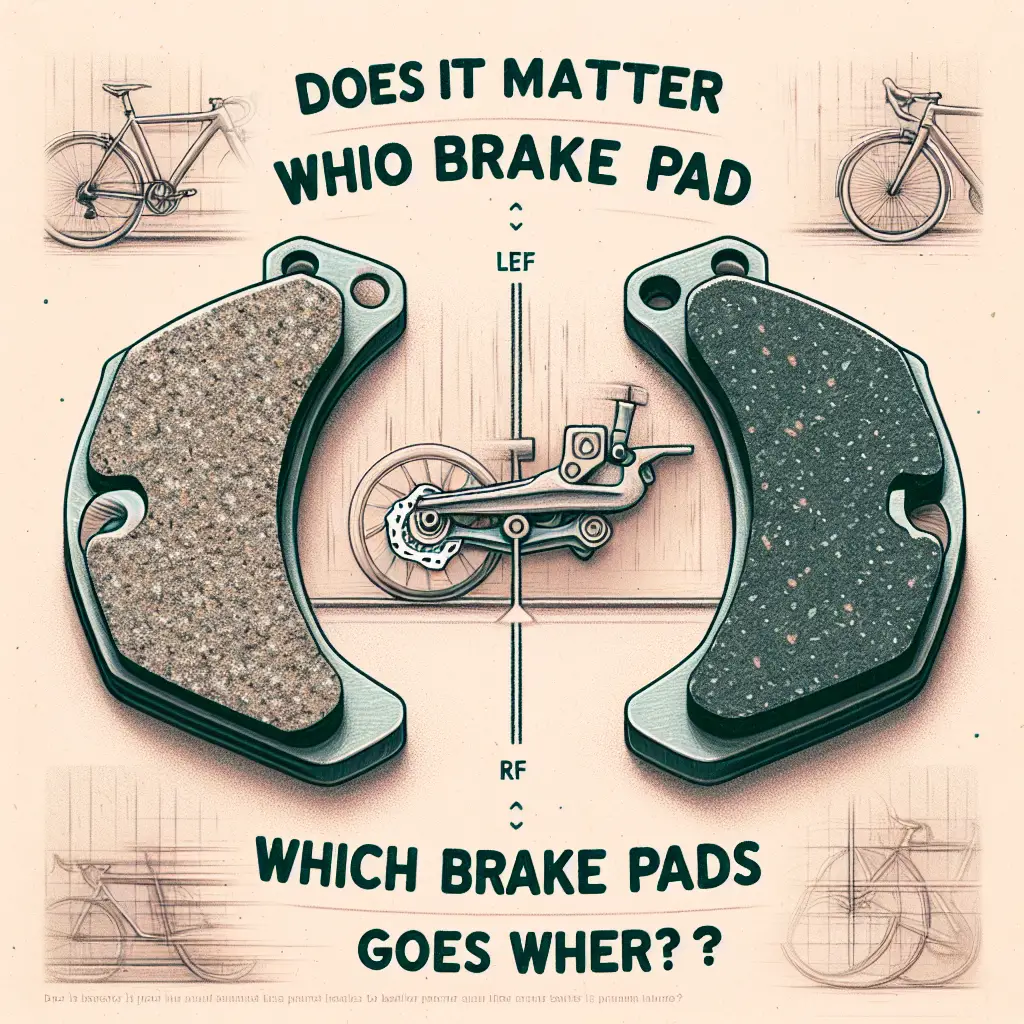Does it Matter Which Brake Pad Goes Where? A Deep Dive Into Brake Pad Installation
When it comes to the safety and performance of your vehicle, the brake system is paramount. Among the components of this crucial system, the brake pads play a significant role in ensuring that your car can stop effectively when it matters most. You might wonder if it matters which brake pad goes where when it’s time for replacements. In this post, we will explore the intricacies of brake pad installation, and whether the position truly impacts your vehicle’s braking performance.
Understanding Brake Pads
Brake pads are a vital part of your car’s disc brake system; comprised of high-friction materials, they are pressed against the brake disc – or rotor – to slow down or stop your car when you apply the brakes. Every wheel that has disc brakes (which is commonly all four wheels in modern cars) has its own set of brake pads.
Does Position Matter?
Many car owners might assume that all brake pads are created equal and can be installed interchangeably. However, this is only partially true. Brake pads are often designed specifically for either the front or rear wheels. This is because the front brakes play a more significant role in stopping the car due to weight transfer to the front of the vehicle under braking.
Front Brake Pads: These are designed for a heavier workload since they handle a larger portion of the braking force. They may also have different wear characteristics and compositions to optimize performance.
Rear Brake Pads: These support the front brakes but handle a smaller portion of the braking force. They can be of a different material and design to complement the front pads’ functionality.
Always refer to your vehicle’s manufacturer recommendations or consult with a professional (Car and Driver is an excellent resource) to ensure you’re selecting the right kind of pad for the front and rear.
Directional vs. Non-Directional Brake Pads
Some brake pads are also directional, meaning they are engineered to function on either the left or right side of your vehicle.
Directional Pads: These pads may feature specific designs such as fin patterns, slots, or chirp clips that work optimally when installed in a certain direction. These design elements are engineered to aid in heat dissipation, noise reduction, and provide overall better braking performance.
Non-Directional Pads: These brake pads can be installed on either side of your vehicle since they do not have directional features that would make one pad different from another.
Make sure to check the brake pad before installation, as there should be indications if the pad is directional. Not all brands use the same labeling methods, so be attentive and, if in doubt, consult your mechanic or the manufacturer’s guidelines.
Installation Best Practices
When Should You Replace Your Brake Pads?
Brake pads should be replaced when they reach about 1/4 inch in thickness, or earlier if you notice a decrease in performance. If you’re unsure, Consumer Reports offers guidance on recognizing the telltale signs of worn brake pads.
How to Ensure Correct Installation
- Identify the Correct Pads: Verify that the brake pads are correct for your vehicle’s make, model, and year. This is crucial for the best performance and safety.
-
Check for Directionality: If your brake pads are directional, ensure they are installed on the correct side of the vehicle.
-
Proper Tools and Equipment: Always use the right tools for the job. Not doing so can lead to incorrect installation or damage to the brake system.
-
Follow Specific Instructions: Some brake systems require specific procedures for pad installation. Always follow any instructions provided by the brake pad manufacturer. Neglecting these could not only diminish braking efficiency but also lead to a safety hazard.
The Consequences of Incorrect Installation
Installing brake pads incorrectly can result in numerous issues:
- Reduced Braking Efficiency: Incorrectly installed brake pads can have less contact with the brake rotor, leading to a reduction in braking power.
-
Uneven Wear: Pads installed on the wrong side or in the wrong front/rear position can wear unevenly, potentially causing further issues with your brake system.
-
Noise and Vibration: Improper installation can cause vibration, noise, and a general decrease in driving comfort.
-
Potential Damage: In extreme cases, incorrectly installed brake pads can damage the rotors or the pads themselves, leading to more expensive repairs.
Conclusion
In summary, it matters a great deal which brake pad goes where – not only to ensure your vehicle adheres to safety standards but also to maintain the overall performance of your car. Always consult your vehicle’s manual, follow manufacturer’s guidelines, and when in doubt, seek professional advice. For those interested in learning more about vehicle maintenance and repairs, the Motor Trend website is another fantastic resource.
While some might find the intricacies of brake pad installation daunting, understanding the basics can not only save you money in the long run but also keep you safe on the road. Next time you’re due for a brake pad change, take a moment to ensure you’re doing it right – because when it comes to brakes, every detail counts.

